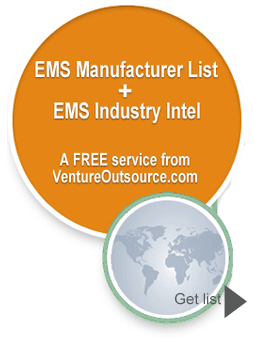On June 1 of 2008 it was D-Day for REACH pre-registration. This was the day the six month window opened. While some myths on REACH do exist, one thing for certain is the window for REACH pre-registration closes November 30, 2008.
Any company failing to pre-register its substance during this window forever loses its ability to delay its registration, which could result in a complete loss of European Union (EU) market share for that substance.
Below are seven steps you can take to avail yourself of the pre-registration advantage and secure your market in the EU.
Step #1: Conduct a complete product inventory
Before you can do anything, you have to be aware of what your products actually are. This may involve approaching your suppliers and mapping out the substances in your products. Doing this is necessary in order to identify which substances are potentially subject to registration requirements, and hence possible candidates for a pre-registration.
Note that pre-registration will only be possible for phase-in substances, therefore if you are putting a substance on the market for the first time, pre-registration may not be an option. The only way you will know whether this is the case will be to conduct an inventory of what substances exist in your products.
Step #2: Determine which substances are exempt from registration
Substances manufactured / imported in quantities less than 1 ton per year, such as radioactive substances; waste substances, are all covered by exemptions which eliminate the need for registration. After you have conducted your survey (Step #1), you should then start eliminating those substances that do not require registration. Why spend effort on exempt substances?
Step #3: Collect substance-specific information for non-exempt substances
For each non-exempt substance from Step #2, you need to pre-register the following information:
- name of the substance, including European Inventory of Existing Chemical Sustances (EINECS) and Chemical Abstract Services (CAS) number
- name and address of contact individual for your company
- envisaged deadline and tonnage band for registration
- name(s) of any substance(s) for which read-across information would be relevant
Step #4: Complete entry of pre-registration information, using either International Uniform Chemical Information Database (IUCLID ) and / or REACH-IT
Once you have all the data collected in Step #3, you then have the option of either manually inputting your data into REACH-IT, or electronically importing it into REACH-IT, via the IUCLID 5 interface.
SEE ALSO
Custom research and briefings
Your approach will generally depend on the amount of substances you are pre-registering. Large substance sets will be handled more efficiently via the IUCLID 5 interface, since data can be bulk-uploaded into REACH-IT without a great deal of manual data entry.
Step #5: Communicate with your customers and suppliers regarding the need to have substances registered by other actors in the supply chain
While you may successfully pre-register all of the substances you are required to register, you may find your products are still placed at risk if key suppliers fail to register the ingredients in your products. Therefore, a complete communication program within your supply chain is necessary in order to ensure there are no disruptions in the supply chain, for anyone.
Step #6: Establish a pre-SIEF to work on collaboratively sharing data for the substances you will be registering
Beginning January 1, 2009, the European Chemicals Agency will be assigning all pre-registrants of each substance to a Substance Information Exchange Forum (SIEF) in order to facilitate data sharing for the purposes of registration.
Prior to 2009, however, you have several months in which you can prepare for these SIEF activities and lay the groundwork for this collaboration in a “pre-SIEF”.
While pre-SIEFs have no legal standing under the REACH regulation, the EU anticipates their importance in facilitating the correct identification of substances in order to correctly establish the appropriate SIEF membership based on substance similarity.
Step #7: Develop contingency plan for substances that may go off the market
You may not control whether all the substances used in your products will be pre-registered since many of them may require other actors (i.e. your suppliers) to perform the necessary pre-registrations.
While communicating with your suppliers will help you anticipate any problems, the pre-registration must ultimately be completed by your supplier. But, you can control the contingency planning for any substances going off the market. Measures may include seeking out alternative suppliers and alternative substances.
On your mark. Get set. Go.
Pre-registration is now upon us. By following these seven steps you can help to ensure your products are minimally impacted by the threat of missing the pre-registration window. Risks can be mitigated and costs reduced by a pro-active approach. Don’t wait until the window starts to close.
Start work on this process now and avoid pitfalls of non-compliance.
Get list of EMS manufacturers for your requirements (Its free)
Save time and money. Find quality EMS manufacturers. Fast. Venture Outsource has a massive, global database of contract electronic design and manufacturing capabilities. Speak with a Provider Advisor.
“Was able to very quickly find details on the important elements of setting up EMS and ODM partnerships, talked with an advisor for personalized info on quality providers matching our requirements while getting up to speed quickly about the industry and connect with key staff from like-minded companies and potential partners. Great resource.”
— Jeff Treuhaft, Sr. Vice President, Fusion-IO
Advisors tell you matches we find for your needs, answer your questions and, can share EMS industry knowledge specific to your industries and markets.




